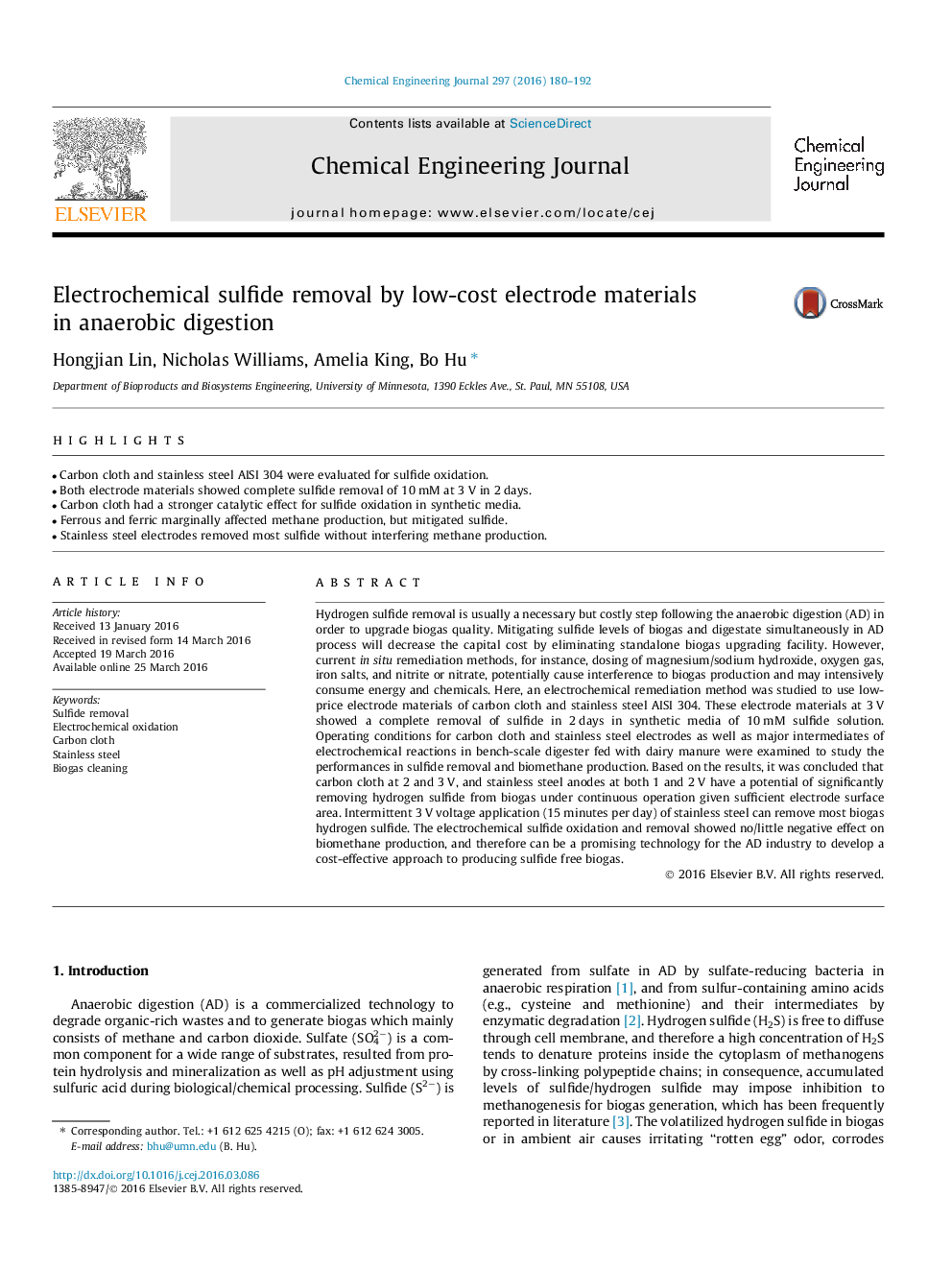| کد مقاله | کد نشریه | سال انتشار | مقاله انگلیسی | نسخه تمام متن |
|---|---|---|---|---|
| 145572 | 456344 | 2016 | 13 صفحه PDF | دانلود رایگان |
• Carbon cloth and stainless steel AISI 304 were evaluated for sulfide oxidation.
• Both electrode materials showed complete sulfide removal of 10 mM at 3 V in 2 days.
• Carbon cloth had a stronger catalytic effect for sulfide oxidation in synthetic media.
• Ferrous and ferric marginally affected methane production, but mitigated sulfide.
• Stainless steel electrodes removed most sulfide without interfering methane production.
Hydrogen sulfide removal is usually a necessary but costly step following the anaerobic digestion (AD) in order to upgrade biogas quality. Mitigating sulfide levels of biogas and digestate simultaneously in AD process will decrease the capital cost by eliminating standalone biogas upgrading facility. However, current in situ remediation methods, for instance, dosing of magnesium/sodium hydroxide, oxygen gas, iron salts, and nitrite or nitrate, potentially cause interference to biogas production and may intensively consume energy and chemicals. Here, an electrochemical remediation method was studied to use low-price electrode materials of carbon cloth and stainless steel AISI 304. These electrode materials at 3 V showed a complete removal of sulfide in 2 days in synthetic media of 10 mM sulfide solution. Operating conditions for carbon cloth and stainless steel electrodes as well as major intermediates of electrochemical reactions in bench-scale digester fed with dairy manure were examined to study the performances in sulfide removal and biomethane production. Based on the results, it was concluded that carbon cloth at 2 and 3 V, and stainless steel anodes at both 1 and 2 V have a potential of significantly removing hydrogen sulfide from biogas under continuous operation given sufficient electrode surface area. Intermittent 3 V voltage application (15 minutes per day) of stainless steel can remove most biogas hydrogen sulfide. The electrochemical sulfide oxidation and removal showed no/little negative effect on biomethane production, and therefore can be a promising technology for the AD industry to develop a cost-effective approach to producing sulfide free biogas.
Journal: Chemical Engineering Journal - Volume 297, 1 August 2016, Pages 180–192
